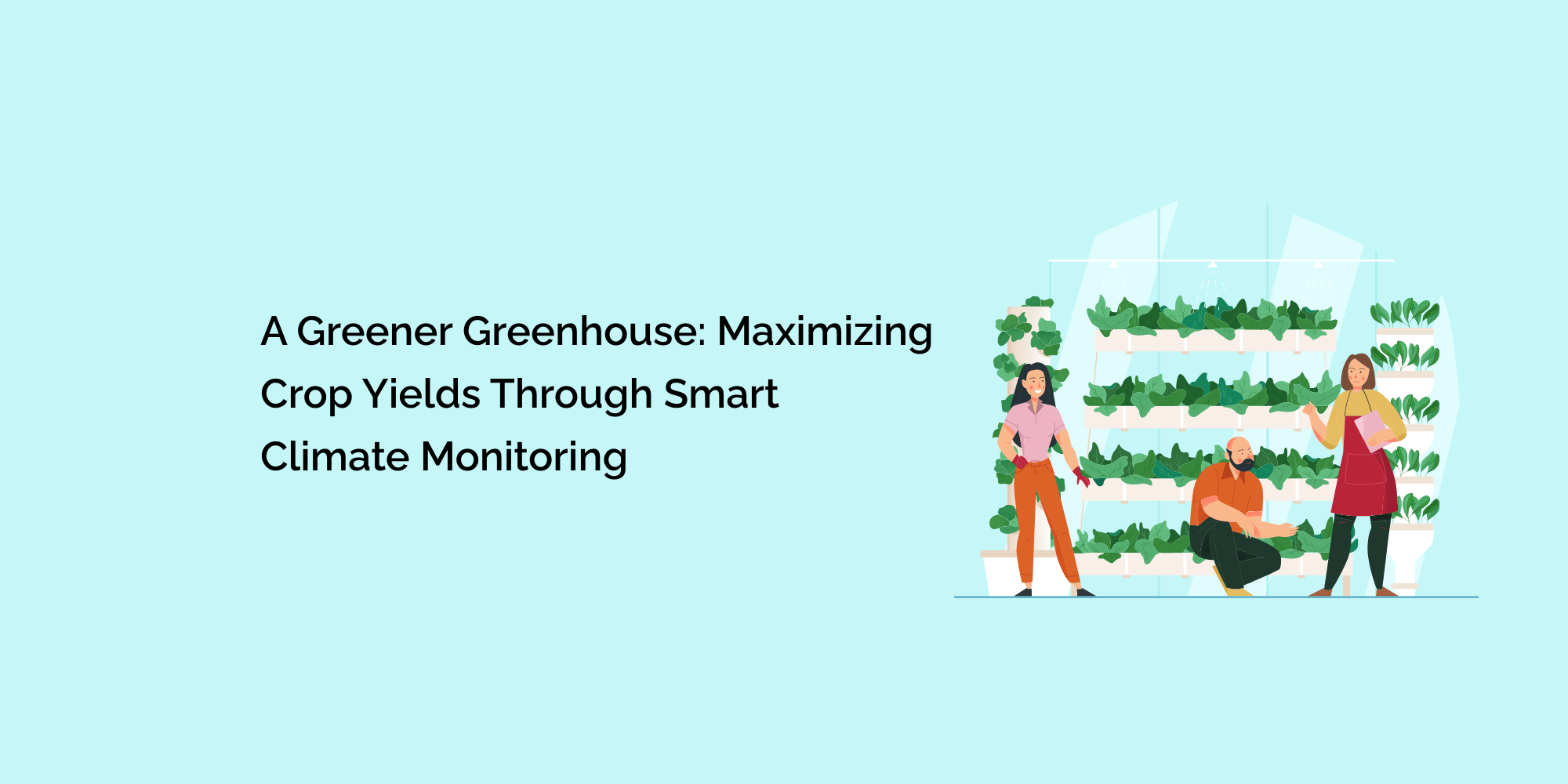Greenhouses have transformed modern agriculture by providing controlled environments that extend growing seasons, enhance crop quality, and optimize yields. However, creating the perfect conditions for plants to thrive within these enclosed spaces can be a complex endeavor. The key lies in precise climate monitoring, which is now made possible through smart technology. In this comprehensive guide, we'll delve into the world of smart climate monitoring in greenhouses, exploring how it maximizes crop yields, ensures resource efficiency, and contributes to a greener future of agriculture.
The Crucial Role of Climate in Greenhouse Cultivation
Climate plays a vital role in greenhouse cultivation. Temperature, humidity, light intensity, and CO2 levels collectively influence plant growth, development, and overall productivity. Precise control of these factors enables growers to create optimal conditions that mimic or even surpass those found in nature. By tailoring the climate within a greenhouse to the specific needs of different crops, growers can extend growing seasons, mitigate weather-related challenges, and consistently produce high-quality yields.
The Evolution of Climate Monitoring: Smart Technology Steps In
Traditional methods of climate monitoring in greenhouses involved manual measurements and adjustments. However, the advent of smart technology has transformed this process. Smart climate monitoring systems, equipped with sensors and automation capabilities, provide real-time data and remote control options. This innovation empowers growers to maintain a stable and conducive environment for plant growth. Here's how smart climate monitoring is revolutionizing greenhouse cultivation:
-
Real-Time Data Insights: Smart climate monitoring systems continuously collect and analyze data on temperature, humidity, light, and more. This real-time information offers growers insights into the dynamic conditions within their greenhouse.
-
Automated Climate Control: Integrated with automated systems, smart monitors can adjust climate settings in response to changing conditions. This ensures that plants receive the optimal environment for growth without manual intervention.
-
Customizable Alerts: Smart systems send alerts to growers' devices when critical parameters deviate from the desired range. Customizable alerts allow for immediate action to prevent potential issues.
-
Precision Crop Management: By fine-tuning climate settings based on the needs of specific crops, growers can maximize yields and quality. Smart climate monitoring enables precision care for different varieties within the same greenhouse.
- Remote Monitoring and Control: Growers can monitor and adjust climate settings remotely through smartphones or computers. This remote access is particularly valuable for those managing multiple greenhouse sites.
Benefits of Smart Climate Monitoring in Greenhouses
Incorporating smart climate monitoring systems into greenhouse cultivation offers numerous advantages:
-
Increased Crop Yields: Optimal climate control results in accelerated growth, extended growing seasons, and higher yields. Tailoring conditions to match plant requirements enhances productivity.
-
Consistent Crop Quality: Uniform climate conditions within the greenhouse lead to consistent crop quality, reducing variability in appearance and taste.
-
Resource Efficiency: Smart climate monitoring optimizes energy, water, and other resource usage by preventing unnecessary heating, cooling, and irrigation.
-
Disease Prevention: Stable conditions discourage the growth of pathogens that thrive in fluctuating environments. This prevention helps maintain healthy plants and reduces the need for chemical interventions.
- Enhanced Sustainability: By reducing resource waste and minimizing the need for pesticides, smart climate monitoring contributes to sustainable and environmentally friendly agriculture.
Strategies for Effective Smart Climate Monitoring
To make the most of smart climate monitoring in greenhouses, consider implementing these strategies:
-
Sensor Placement: Position sensors strategically to capture accurate readings that reflect the conditions experienced by your plants. Different plant types may require sensors at varying heights.
-
Regular Maintenance: Clean and calibrate sensors periodically according to manufacturer guidelines to ensure accurate data collection and reliable performance.
-
Data Interpretation: Educate yourself on interpreting climate data and understanding the optimal ranges for different crops. This knowledge empowers you to make informed decisions.
-
Automation Settings: Customize automation settings based on the climate preferences of specific plants. Different growth stages may necessitate varying conditions.
- Comprehensive Greenhouse Management: While smart climate monitoring is invaluable, remember that climate control is just one aspect of successful greenhouse cultivation. Adequate lighting, proper irrigation, and nutrient management are equally crucial.
The Future of Greenhouse Cultivation: AI and Beyond
As technology continues to advance, the future of greenhouse cultivation holds exciting possibilities. AI-driven systems could analyze data from multiple sensors to predict optimal climate settings for different crops and growth stages. This level of automation has the potential to redefine greenhouse farming practices.
Conclusion
Greenhouse cultivation has transformed agriculture, offering controlled environments that yield remarkable harvests regardless of external conditions. Smart climate monitoring systems add a layer of precision to this endeavor, enabling growers to fine-tune temperature, humidity, light, and CO2 levels for optimal plant growth. Through real-time data insights, automated climate control, and customizable alerts, these systems maximize crop yields, enhance quality, and contribute to resource efficiency. By embracing smart technology, growers embark on a journey to master the art of greenhouse cultivation, harnessing the power of innovation to nurture plants from seed to harvest. As you unlock the potential of smart climate monitoring, you play a vital role in shaping a greener future for agriculture—one where technology and nature collaborate to provide sustenance for generations to come.








